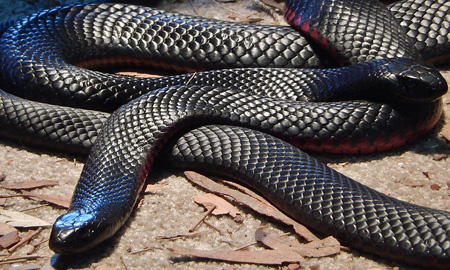Introduction
Tiger serpents (Notechis scutatus) are amongst one of the most remarkable yet been afraid reptiles discovered in Australia. With their striking look and potent poison, these snakes evoke a combination of wonder and caution. Observing tiger serpents in their natural surroundings can be an exciting experience for nature fanatics, wild animals professional photographers, and scientists alike. However, it's critical to approach this venture with respect for the pet's environment and an understanding of safety measures to prevent serpent bites.
In this extensive guide, we'll discover how to safely observe tiger snakes in their all-natural habitat. We will cover topics varying from understanding their behavior and environments to first aid for snake bites-- outfitting you with knowledge to improve your experience while minimizing risks.
What is a Tiger Snake?
Tiger serpents are very poisonous snakes belonging to Australia, particularly Tasmania and seaside areas. They are known for their unique banded pigmentation appearing like a tiger's stripes, which can range from yellowish-brown to dark brown or perhaps black.

Physical Characteristics
Tiger serpents are medium to large-sized snakes that can grow up to 2 meters long. Their bodies are robust, and they have a broad head that is clearly larger than their necks.
Habitat Preferences of Tiger Snakes
These reptiles typically live in wetlands, tidewaters, and seaside regions but can also be found near freshwater sources like rivers and lakes. Recognizing where these serpents live is critical for any individual looking to observe them safely.

Understanding Tiger Serpent Behavior
Are Tiger Snakes Venomous?
Yes, tiger snakes are amongst the most poisonous snake species worldwide. Their poison has neurotoxins that can bring about severe medical issues if bitten.
Behavioral Traits
Tiger snakes are typically timid creatures; they like to stay clear of human interaction. However, they can become hostile if intimidated or collared.
Where Can You Locate Tiger Snakes?
Tiger Snake Habitat Exploration
To safely observe tiger snakes in their all-natural habitat, it's necessary first to recognize where they flourish. They often tend to prefer:
- Coastal marshlands Mangroves Swamps Riverbanks
Best Areas for Observation
Some advised locations include:
- Tasmanian wetlands The coasts of southern Australia National parks with water bodies
Safety Preventative measures Before Observing Tiger Snakes
Understanding the Dangers of a Tiger Serpent Bite
Although experiences with tiger snakes can be thrilling, understanding the threats entailed is critical:
Recognize symptoms of a snake bite: swelling at the website, discomfort radiating from the bite area. Know emergency situation calls: Familiarize yourself with regional emergency situation services. Carry a first-aid package specifically furnished for snake bites.First Help for Snake Bites: What You Need to Know
Knowing what actions to take if bitten could conserve your life or somebody else's:
what does a snake bite look like- Stay tranquility; motion enhances poison spread. Call for clinical assistance immediately. Do not apply ice or effort suctioning.
How to Safely Observe Tiger Snakes in Their Natural Habitat
When you make a decision to observe Conservation of Australian snakes tiger snakes in the wild:
Dress Appropriately: Wear lengthy trousers and strong boots. Use Binoculars: Keep a secure distance while observing these reptiles. Avoid Unexpected Movements: Quick motions might stun them. Stay on Established Trails: Stay clear of roaming right into dense underbrush where presence is low.Equipment Required for Observation
Essential Gear Checklist
- Binoculars First-aid kit particularly designed for serpent bites Field guidebook on Australian reptiles Camera (with zoom capability)
Snake Bite First Aid Kit Essentials
A well-appointed first aid kit must consist of:|Thing|Function|| -------------------------------|-------------------------------|| Compression plaster|To immobilize the afflicted location|| Antihistamines|For allergic reactions|| Emergency situation get in touch with numbers|Quick gain access to during emergencies|
Interpreting Tiger Serpent Signals
Understanding how tiger serpents communicate via body movement assists viewers gauge when it's safe or harmful:
Common Behaviors
Defensive pose: If curled or raised off the ground. Retreating actions: When they slowly retreat from prospective threats.Dealing With Prospective Encounters
Even with preventative measures taken, an encounter may still happen during your monitoring trip:
Remain tranquility; stressing just enhances risks. Slowly pull back without transforming your back on the snake. Make your presence understood verbally however avoid abrupt movements.Frequently Asked Concerns Regarding Tiger Snakes
1. What ought to I do if I see a tiger snake?
Remain tranquility; observe from a range without disturbing it.
2. Are baby tiger snakes dangerous?
Yes, juvenile tiger serpents are born poisonous and may posture risks comparable to adults in spite of being smaller.
3. Just how usual are tiger snake bites?
While incidents happen each year in Australia, deaths are uncommon because of prompt treatment availability.

4. Can I keep a tiger serpent as a pet?
Keeping wild tiger serpents as family pets is illegal in several areas as a result of conservation laws.
5. What does a tiger snake bite look like?
Bite marks typically reveal 2 puncture injuries along with localized swelling and discoloration.
6. Just how effective is antivenom?
Antivenom treatment is highly reliable when provided timely after a bite.
Conclusion
Observing tiger serpents in their natural habitat supplies an exciting possibility for wildlife fans however should be approached with caution and respect for both the animal and its setting. By arming on your own with expertise about these remarkable reptiles-- consisting of Inland Taipan understanding their habits and precaution-- you can delight in remarkable experiences while significantly lowering dangers connected with encounters.
In recap, always prioritize safety by preparing properly prior to starting any type of wild animals observation exploration-- particularly when handling a few of nature's most venomous creatures like the tiger snake!